Stella McCartney talks exclusively about her debut menswear collection

Simply sign up to the Fashion myFT Digest -- delivered directly to your inbox.
Among the many topics that turn Stella McCartney’s steady stream of enthusiasm into a torrent is the contents of her parents’ wardrobe when she was growing up in the English countryside in the 1970s and early ’80s. “It was half composed of this kind of stage gear and vintage clothing, half of beautifully made bespoke Savile Row pieces,” she says, settling into a chair in a whiter-than-white boardroom on the ground floor of her west London studios. “Wanting to be a fashion designer at such an early age” – McCartney had begun designing and making clothing by the age of 13 – “was a response to that.”
But it’s a photograph of her father Paul McCartney taken in Marrakech in 1972 – a year after Stella was born and four years after he and the other three Beatles studied transcendental meditation in northern India – that inspired one of the standout pieces in her debut menswear collection: a denim sweatshirt (£560) with intricate white embroidery around the neck and cuffs. “He’s wearing a tailored shirt underneath it,” she says. “For me, the idea of a bespoke shirt – a real luxury – paired with a kind of hippie cotton-embroidered garment, that marriage of two concepts, is so relevant and fresh. That’s what I want to explore with this collection – freeing men up a little bit. Allowing them some more ease in the way they approach their wardrobes, but still giving a nod to heritage.”

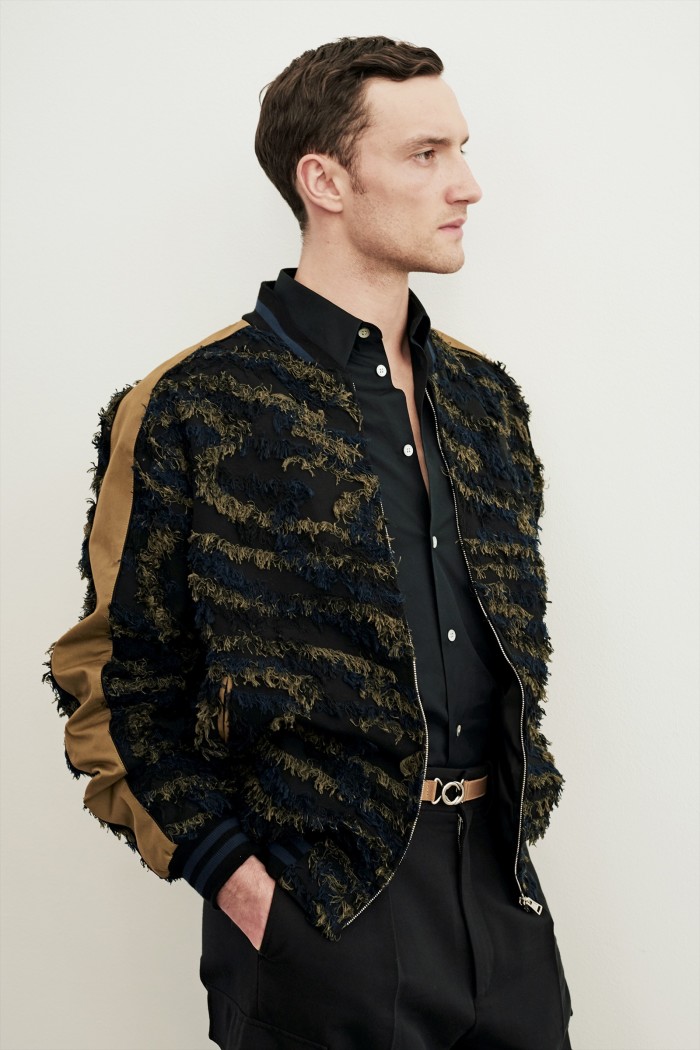
The piece is just one of many in the new spring/summer collection – which includes 24 full looks, as well as travel bags, shoes, hats and sunglasses – that doffs its cap to postwar musical subcultures. The tailored ink canvas suits (£1,375) recall the Teddy Boy movement, while the psychedelic print on one baggy T-shirt (£185) is distinctly flower power; the long-sleeved crewnecks with multicoloured horizontal stripes (£615) call to mind The Stone Roses in their pomp; the bonded cotton trenches (from £1,300) and lengthy football scarves (£295) have a smart-casual tinge of Britpop about them, while the various items of “athleisure” – a word McCartney is extremely fond of – wouldn’t look out of place at a 1990s rave. “There’s a lot of music in this collection,” she agrees. “My design experiences have always had a rock ’n’ roll take – like that whole 1960s Beatles moment where they’re wearing what until then had been reserved for very wealthy dukes and so on. That idea of marrying the bespoke with the much more street, real, human British guy is, for me, interesting and important.”
Indeed, as well as a celebration of pop-music culture, the collection is a love letter to McCartney’s native land, and in particular its capital city, where she honed her design smarts. Having studied Fashion Design at Central Saint Martins, she did an apprenticeship with tailor Edward Sexton, a friend of her father’s in the late 1960s (Paul sports an Edward Sexton-made suit on the cover of Abbey Road), before stepping into Karl Lagerfeld’s shoes at French house Chloé. Sexton – who says that the menswear collection “complements her womenswear well” and creates “a fresh line through her use of colour and pattern” – has continued to influence her work ever since. “Menswear will always have its roots here, and what I learnt studying with Sexton is the only way I know how to do tailoring – it’ll be at the core of all our menswear collections,” McCartney emphasises.
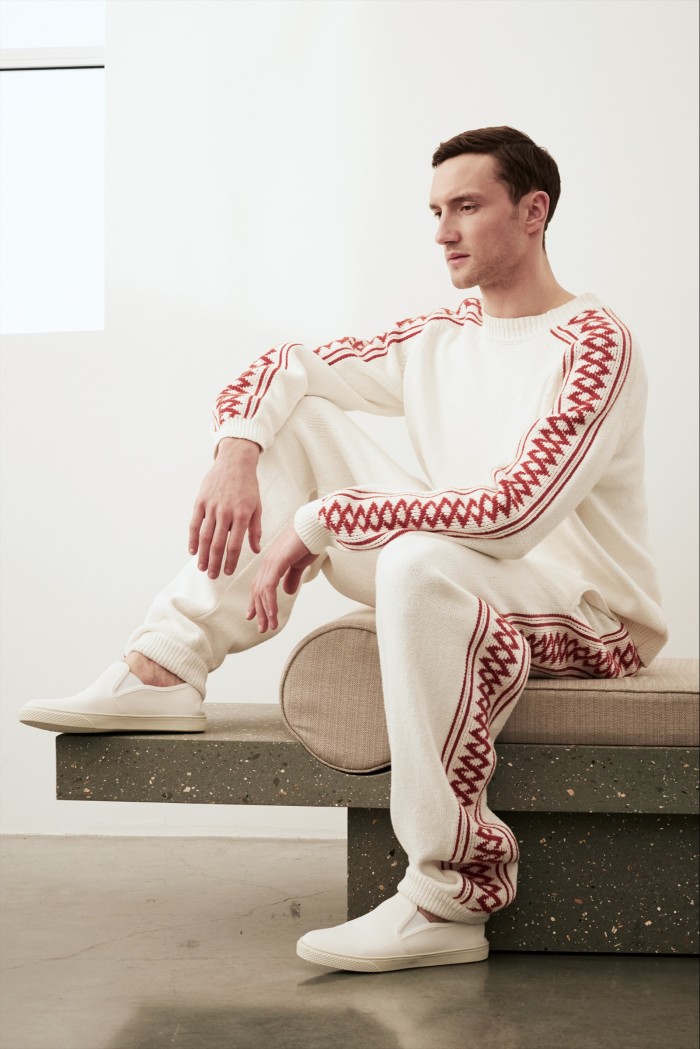
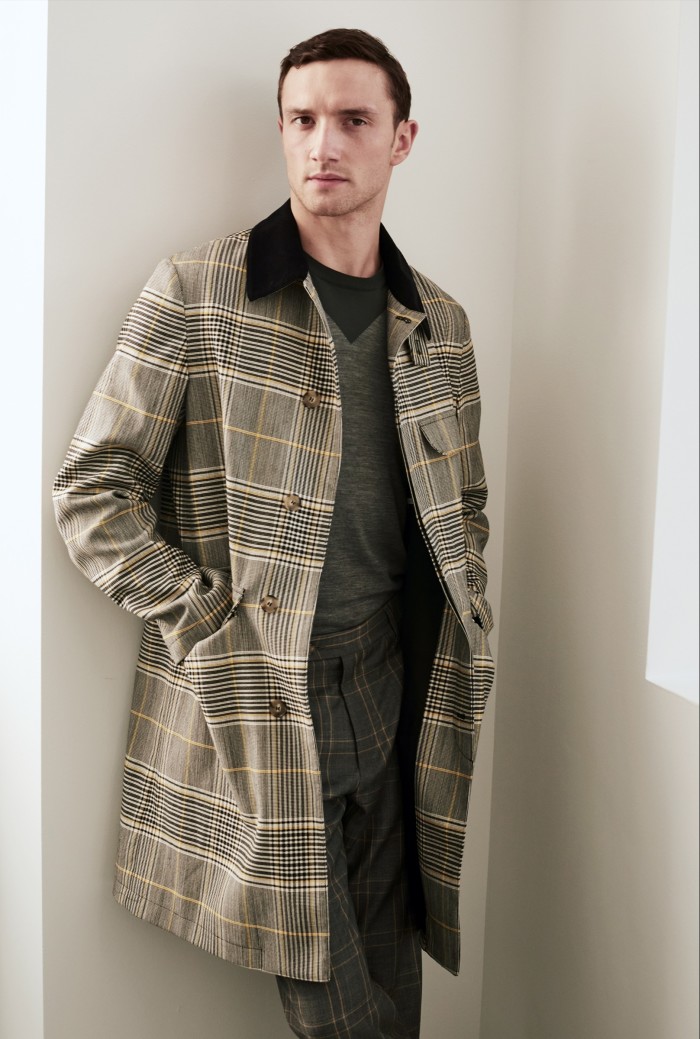
Asked why there aren’t more women designing for men, she proffers an ambiguous chuckle, which, if anything, seems to imply that she remains bewildered, despite having given the matter a great deal of thought. “Men might be afraid of the idea,” she eventually suggests. “It’s a big question – maybe one that needs a couple of hours and a bottle of tequila.” She’s certainly struck a chord in the modern man’s psyche with this collection though, according to Damien Paul, head of menswear at Matchesfashion.com. “We were unsure what to expect before seeing the inaugural menswear collection in Paris,” he says, “but there was a real breadth and depth. Some of Stella’s key signatures are present: the use of appliqué insignia, for instance, in this case swallows appearing on a shirt [£485], and also her choice of slouchy knitwear [such as the jumper, £565, and trousers, £800], which was something we expected to see. There’s a sense of fun in the collection – it has a playful feel, and the outerwear and tailoring are relaxed and less structured, which resonates with the needs of men today.”
Jack Cassidy – designer and contemporary menswear buyer at Selfridges, which also stocks the collection – describes it as “refreshing” and “completely in line with what we see happening in menswear at the moment”; Frederick Lukoff, CEO of the Stella McCartney brand, adds, “There has always been a masculine side to what Stella does for her women’s collection. Tailoring is part of the DNA of the brand, and the values that we have in women’s and what Stella stands for translate well into men’s. We have always made a point of being an inclusive brand that can appeal to women of all ages and sizes, and we have that same ambition for men.”
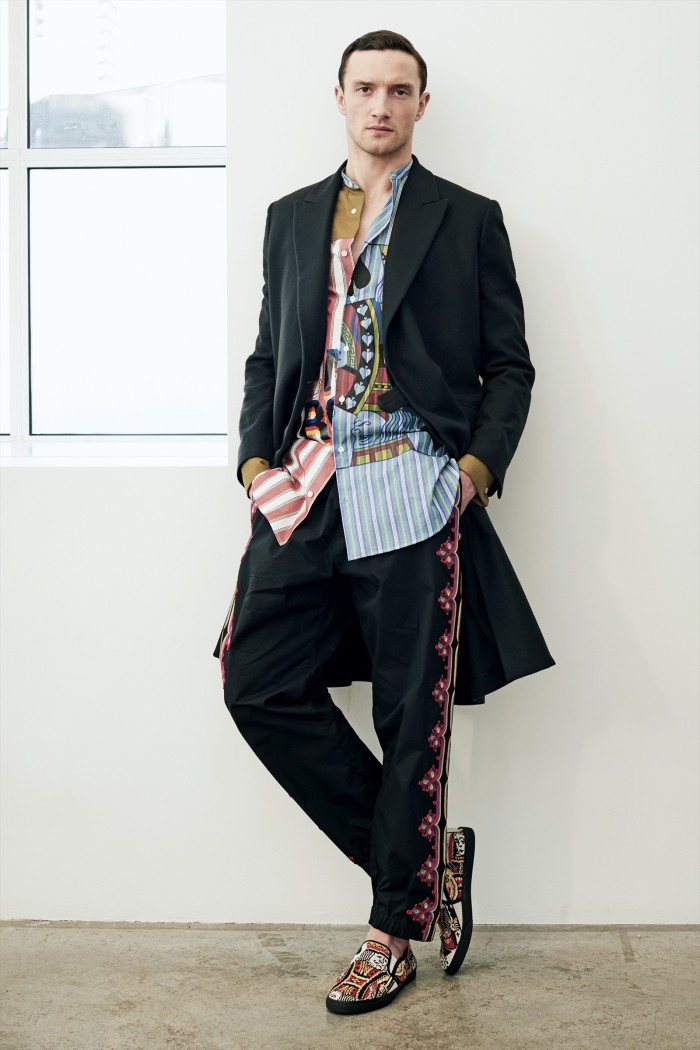
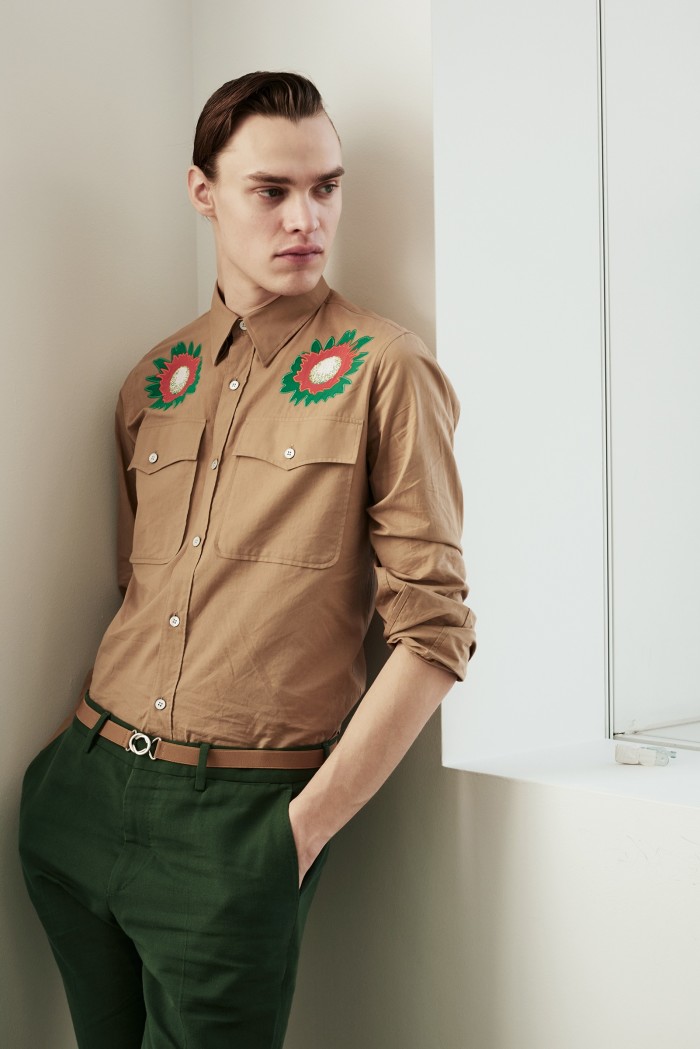
Does McCartney herself have any particular demographic in mind, though? Her husband Alasdhair Willis may have worn an early sample from the collection (a four-button double-breasted black suit, £920) to a Paris Fashion Week runway show in October, but this offers no hint, she says. “There wasn’t any premeditation behind that,” she laughs. “In fact, it’s almost a bit naff: here’s my husband showing off my clothes. It just sort of happened.” So is there a specific “Stella McCartney Man”? “I’m not good at targeting people in that sense,” she says. “It’s an idea that sits uneasily on my shoulders. That’s just not how I work at all.”
Rather than being aimed at any specific group, the collection, McCartney declares, is a rallying cry to all those with Y chromosomes to shed their inhibitions. “You look at the clothes that inspire musicians, and they’re so incredible compared to those worn by men who aren’t allowing themselves to communicate through their clothing,” she says. “It’s such a liberating thing. Preparing the collection, we looked at a lot of images from a wide period of time, and you find yourself thinking, ‘Well, wouldn’t it be lovely if you could just drip-feed a little of that into men’s wardrobes again? Wouldn’t it be lovely if men were allowed to put even a tiny bit of emotion back into their clothing?’ I know how I Iike men to look, and I’m providing a wardrobe that’s equally for the boyfriend, brother, husband, friend or son of the Stella McCartney woman. It’s quite specific, but it might take a little time for guys to get it, because we only have one season at a time to say what we want to say.”

The new line, more than half a decade in the planning and “a brand within a brand”, as McCartney refers to it, is something the house is taking very seriously. “It really is a massive decision for us,” she says. Strictly speaking though, it’s not McCartney’s first foray into menswear. She’s made custom men’s pieces for rock royalty including David Bowie and Ronnie Wood, and, as part of her long-running relationship with Adidas, created the label’s kit for the national Olympic and Paralympic teams for London 2012 and Rio 2016. Other highlights from her CV include designing costumes for Madonna and Annie Lennox’s tours, Gwyneth Paltrow and Jude Law’s attire in the film Sky Captain and the World of Tomorrow, a 40-item collection for high-street fashion giant H&M and collections for GapKids.
The thread that runs through all these endeavours is, of course, a rigid ethical stance. Her mother Linda – the New York-born photographer and animal-rights activist who married the shortly to-be-former Beatle in March 1969 – inspired the entire family to turn vegetarian, and McCartney has refused to use leather and fur throughout her career. A broad focus on sustainable, responsible production remains at the vanguard of all the house’s endeavours. “It’s not something we want to shove in people’s faces,” she says. “We don’t want to make people feel bad if they’re not eco-warriors. The first thing I need to do is design clothes that you want to wear. That’s my job. Now, what I’d like to do is design clothes you want to wear that happen to be organic, be made of more sustainable materials and involve more mindful sourcing and manufacturing.”
In the case of the new collection, these materials include recycled nylons made out of plastic bottles and regenerated cashmere – essentially the cuttings from the factory floor that otherwise would have gone to waste. How hard was it to balance provenance and ethics with functionality and aesthetics? With drape and silhouette? “It’s a constant challenge for all of us, but we’re an agile company and we like a challenge – and if it’s a challenge for the right reasons, then we’re totally game on for it. I think we have to drip-feed people products that they can slowly incorporate into the landscape of materials they think they can have in their wardrobes.”
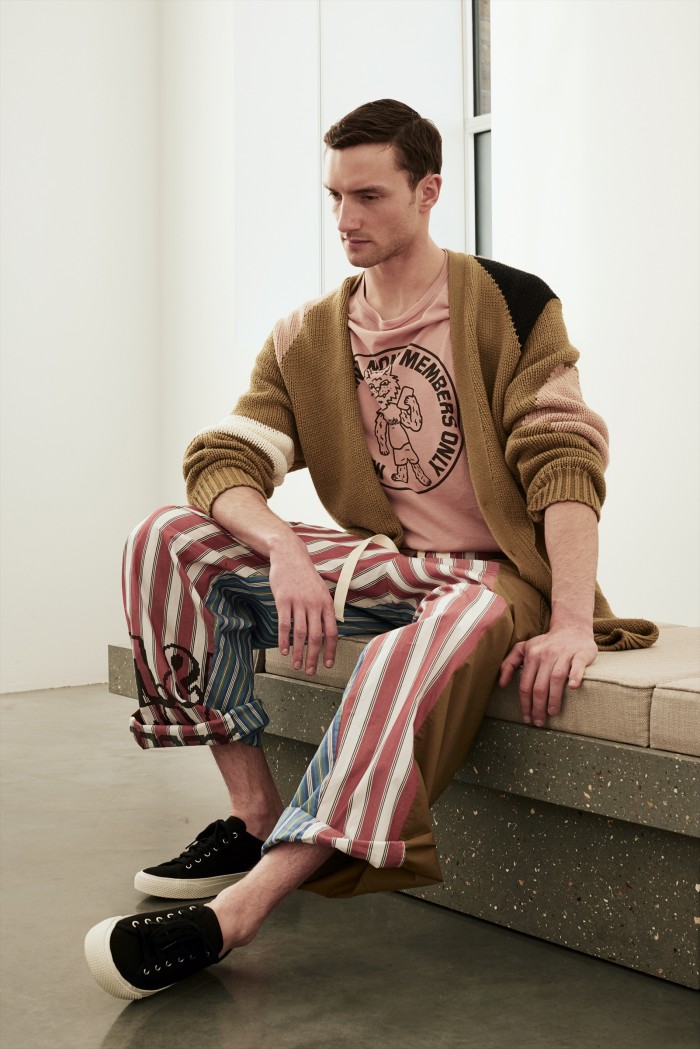
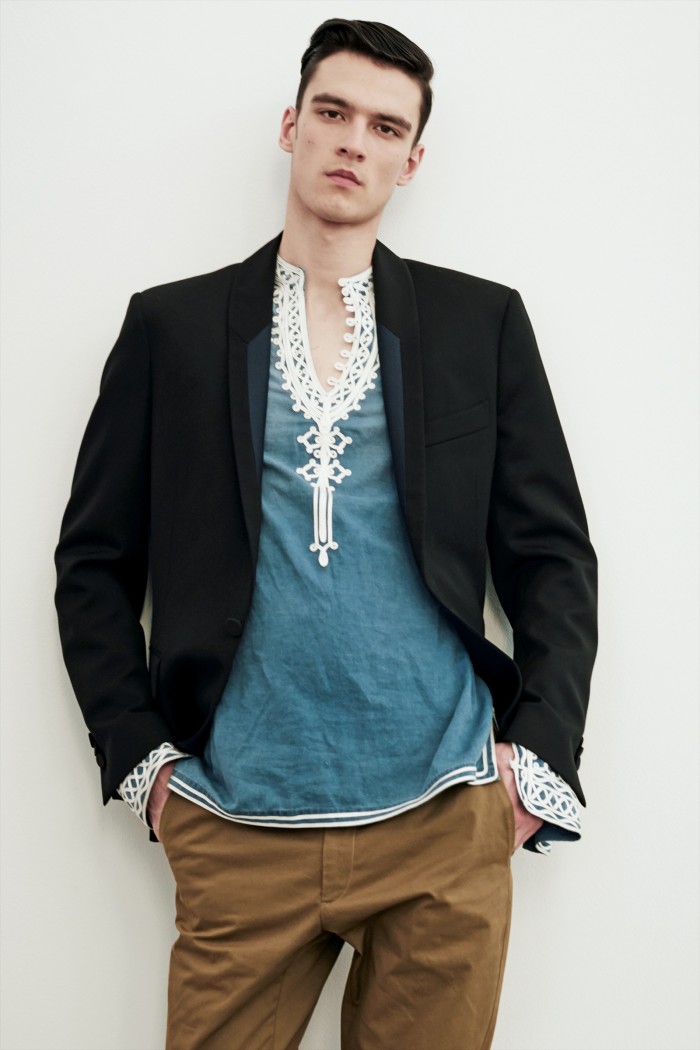
It’s helpful for McCartney’s conscientious objectives that her brand’s parent company, which also owns Gucci, Alexander McQueen and Brioni, is onside. “Kering has been great,” she says. “It has a lot of systems set in place that are helpful to what we’re doing.” And even those impervious to McCartney’s ethical standards surely cannot fail to be impressed by how she accommodates them into a consistently successful commercial venture. The Stella McCartney brand now has 47 freestanding stores in locations including Manhattan, London, LA, Paris, Milan, Tokyo and Beijing and is distributed in more than 75 countries. The 2015 Stella McCartney Environmental Profit and Loss (EP&L) Account showed a 35 per cent reduction in environmental impact per kilogram of material used over the previous three years, with turnover growth for that year in double digits. Talking to McCartney at length, it’s hard not to concur with Harvard Business School associate professor Anat Keinan, who, in a 2015 study, saluted her “persistence and patience” in achieving her goals since she launched her own label in 2001. “I’d put [our success] down to us working hard and setting ourselves tight goals within tight deadlines,” McCartney says. “We’re very ‘This is where we’re at, and this is where we’ll be by then’.”
Another key tenet of McCartney’s approach is a willingness to experiment – not just with materials, colours and cuts, but with approaches to retail. “It was a simple case of ‘why not?’,” she says of the decision to offer the collection on a “see-now, buy-now” basis, whereby clothing can be purchased shortly after catwalk debuts. “We don’t really want to get tied into a system of retail. We’re pretty young for a fashion house, so we want to have a fresh approach and not give ourselves too many limitations – that’s why we don’t show our collections in a conventional way all the time.”
The biggest driver of the Stella McCartney narrative to date, though, is sheer passion for what she sees as her calling. She insists that she’s never off creative duty: “Even on the weekend, riding my horse or doing things with my kids,” she says, enthusiasm again in full flow, “I’ll look at a leaf on a tree and it will immediately trigger a reaction: ‘Oh, we should do that kind of print, or that kind of colour’.” The ethical impetus behind her work is also surely a big motivator. Famous Parent Syndrome could well be another (“Stella once said to me, ‘Can you imagine what it is like to have a father nobody has ever said no to?’,” Edward Sexton recalls. “I think it’s this that has driven her to become so successful”).
Whatever is the fiercest gust in her sails, the story that began with Stella McCartney gazing into a lavishly stocked rock ’n’ roll wardrobe in rural southern England, some time in the late 1970s, undoubtedly has more twists and turns to come.
Comments